�
Power Factor Correction (PFC) Handbook
Choosing the Right Power Factor Controller Solution
HBD853/D
Rev. 4, Feb−2011
© SCILLC, 2011
Previous Edition E 2007
All Rights Reserved”
www.onsemi.com
ON Semiconductor and are registered trademarks of Semiconductor Components Industries, LLC (SCILLC). SCILLC reserves the right to make changes without further notice
to any products herein. SCILLC makes no warranty, representation or guarantee regarding the suitability of its products for any particular purpose, nor does SCILLC assume any liability
arising out of the application or use of any product or circuit, and specifically disclaims any and all liability, including without limitation special, consequential or incidental damages.
Typical” parameters which may be provided in SCILLC data sheets and/or specifications can and do vary in different applications and actual performance may vary over time. All
operating parameters, including Typicals” must be validated for each customer application by customer’s technical experts. SCILLC does not convey any license under its patent rights
nor the rights of others. SCILLC products are not designed, intended, or authorized for use as components in systems intended for surgical implant into the body, or other applications
intended to support or sustain life, or for any other application in which the failure of the SCILLC product could create a situation where personal injury or death may occur. Should
Buyer purchase or use SCILLC products for any such unintended or unauthorized application, Buyer shall indemnify and hold SCILLC and its officers, employees, subsidiaries, affiliates,
and distributors harmless against all claims, costs, damages, and expenses, and reasonable attorney fees arising out of, directly or indirectly, any claim of personal injury or death
associated with such unintended or unauthorized use, even if such claim alleges that SCILLC was negligent regarding the design or manufacture of the part. SCILLC is an Equal
Opportunity/Affirmative Action Employer. This literature is subject to all applicable copyright laws and is not for resale in any manner.
PUBLICATION ORDERING INFORMATION
LITERATURE FULFILLMENT:
Literature Distribution Center for ON Semiconductor
P.O. Box 5163, Denver, Colorado 80217 USA
Phone: 303−675−2175 or 800−344−3860 Toll Free USA/Canada
Fax: 303−675−2176 or 800−344−3867 Toll Free USA/Canada
Email: orderlit@onsemi.com
N. American Technical Support: 800−282−9855 Toll Free
USA/Canada
Europe, Middle East and Africa Technical Support:
Phone: 421 33 790 2910
Japan Customer Focus Center
Phone: 81−3−5773−3850
ON Semiconductor Website: www.onsemi.com
Order Literature: http://www.onsemi.com/orderlit
For additional information, please contact your local
Sales Representative
www.onsemi.com
2
�
Table of Contents
Foreward
Preface
Chapter 1: Overview of Power Factor Correction Approaches
Chapter 2: Methodology for Comparison of Active PFC Approaches
Chapter 3: Critical Conduction Mode (CrM) PFC
Chapter 4: Frequency Clamped Critical Conduction Mode (FCCrM) PFC
Chapter 5: Continuous Conduction Mode (CCM) PFC
Chapter 6: Interleaved PFC
Chapter 7: Bridgeless PFC
Chapter 8: Single Stage, Isolated Power Factor Correction
Chapter 9: Detailed Analyses and Comparisons
. . . . . . . . . . . . . . . . . . . . . . . . . . . . . . . . . . . . . . . . . . . . . . . . . . . . . . . . . . . . . . . . . . . . . . . . . . . . . . . . . .
. . . . . . . . . . . . . . . . . . . . . . . . . . . . . . . . . . . . . . . . . . . . . . . . . . . . . . . . . . . . . . . . . . . . . . . . . . . . . . . . . . .
. . . . . . . . . . . . . . . . . . . . . . . . . . . . . . . . . . . . .
. . . . . . . . . . . . . . . . . . . . . . . . . . . . . .
. . . . . . . . . . . . . . . . . . . . . . . . . . . . . . . . . . . . . . . . . . . . . . .
. . . . . . . . . . . . . . . . . . . . . . . . . .
. . . . . . . . . . . . . . . . . . . . . . . . . . . . . . . . . . . . . . . . . .
. . . . . . . . . . . . . . . . . . . . . . . . . . . . . . . . . . . . . . . . . . . . . . . . . . . . . . . . . . . . . . . . .
. . . . . . . . . . . . . . . . . . . . . . . . . . . . . . . . . . . . . . . . . . . . . . . . . . . . . . . . . . . . . . . . .
. . . . . . . . . . . . . . . . . . . . . . . . . . . . . . . . . . . . . .
. . . . . . . . . . . . . . . . . . . . . . . . . . . . . . . . . . . . . . . . . . . . . .
Page
5
7
9
27
31
45
59
71
85
97
107
For additional information on Power Factor Correction, contact the Technical Information Center at 800−282−9855 (from the
USA and Canada) or www.onsemi.com/tech−support.
www.onsemi.com
3
�
www.onsemi.com
4
�
FOREWORD
Designing power supplies in a global energy efficiency context
Designing power supplies has always been a challenging task. But just as many of the traditional
problems have been solved, emerging regulatory standards governing efficiency levels are about to start
the cycle over again.
The first phase of this cycle is already well underway and has focused on improving standby power
consumption levels (passive mode). The next phase is tackling the tougher problem of improving active
mode efficiency levels. Government agencies around the world, driven by the US Environmental
Protection Agency (EPA) and its ENERGY STAR® program and by the China National Institute of
Standardization (CNIS), are announcing new performance standards for active mode efficiency for
power supplies.
The standards are aggressive and it will take the joint efforts of manufacturers and their suppliers
(including semiconductor suppliers) to provide solutions that meet the new challenges.
Amidst these trends, power factor correction (PFC) or harmonic reduction requirements as mandated
by IEC 61000−3−2 stands out as the biggest inflection point in power supply architectures in recent years.
With increasing power levels for all equipment and widening applicability of the harmonic reduction
standards, more and more power supply designs are incorporating PFC capability. Designers are faced
with the difficult tasks of incorporating the appropriate PFC stage while meeting the other regulatory
requirements such as standby power reduction, active mode efficiency and EMI limits.
ON Semiconductor is committed to providing optimal solutions for any given power supply
requirement. Our commitment is reflected in providing design guidance in choosing between many
options for topology and components. In this handbook we have attempted to provide a detailed
comparison between various options for PFC implementation while keeping it in the context of total
system requirements. As new technologies and components are developed, the balance of choice may
shift from one approach to the other, but the methodology used in this handbook will remain applicable
and provide a means for the power supply designer to arrive at the best choice for a given application.
We at ON Semiconductor sincerely hope this book will help you to design efficient, economical PFC
circuits for your products. Please see our Web site, www.onsemi.com, for up−to−date information on this
subject.
www.onsemi.com
5
�
http://onsemi.com
6
�
Preface
Choices for the power factor correction solutions range from passive circuits to a variety of active circuits. Depending on
the power level and other specifics of the application, the appropriate solution will differ. The advances in the discrete
semiconductors in recent years, coupled with availability of lower priced control ICs have made the active PFC solutions more
appropriate in a wider range of applications. When evaluating the PFC solutions, it is important to look at them in the context
of full system implementation cost and performance.
This handbook is an updated version of the first PFC handbook published by ON Semiconductor in 2003. This current
version was updated with the assistance of Dhaval Dalal from Acptek (dhaval@acptek.com).
In this handbook, a number of different PFC approaches are evaluated for a 300 W (400 V, 0.75 A) application. An overview
of select single−stage isolated converters including an LED driver is also presented. By providing step-by-step design
guidelines and system level comparisons, it is hoped that this effort will help the power electronics designers select the right
approach for their application.
Chapter 1 provides a comprehensive overview of PFC circuits and details of operation and design considerations for
commonly used PFC circuits.
Chapter 2 describes the methodology used for comparing different active PFC approaches for a given application (400 V, 0.75
A output). It also briefly introduces the proposed approaches.
Chapter 3 contains the design guidelines, discussion and salient operational results for the two variations of the critical
conduction mode topologies (voltage mode and current mode)
Chapter 4 contains the design guidelines, discussion and salient operational results for the Frequency Clamped CrM topology
Chapter 5 contains the design guidelines, discussion and salient operational results for the continuous conduction mode
topology
Chapter 6 contains the information on the interleaved PFC topology and salient operational results
Chapter 7 contains the information on the bridgeless PFC approach and salient operational results
Chapter 8 contains information on the single stage PFC operation and salient operational results
Chapter 9 provides a detailed analysis of the results obtained from the three different implementations (CrM, FCCrM and
CCM) for the same applications. Comparative analyses and rankings are provided for the topologies for given
criteria. It also includes guidelines for the designers based on the results described in the previous chapters.
http://onsemi.com
7
�
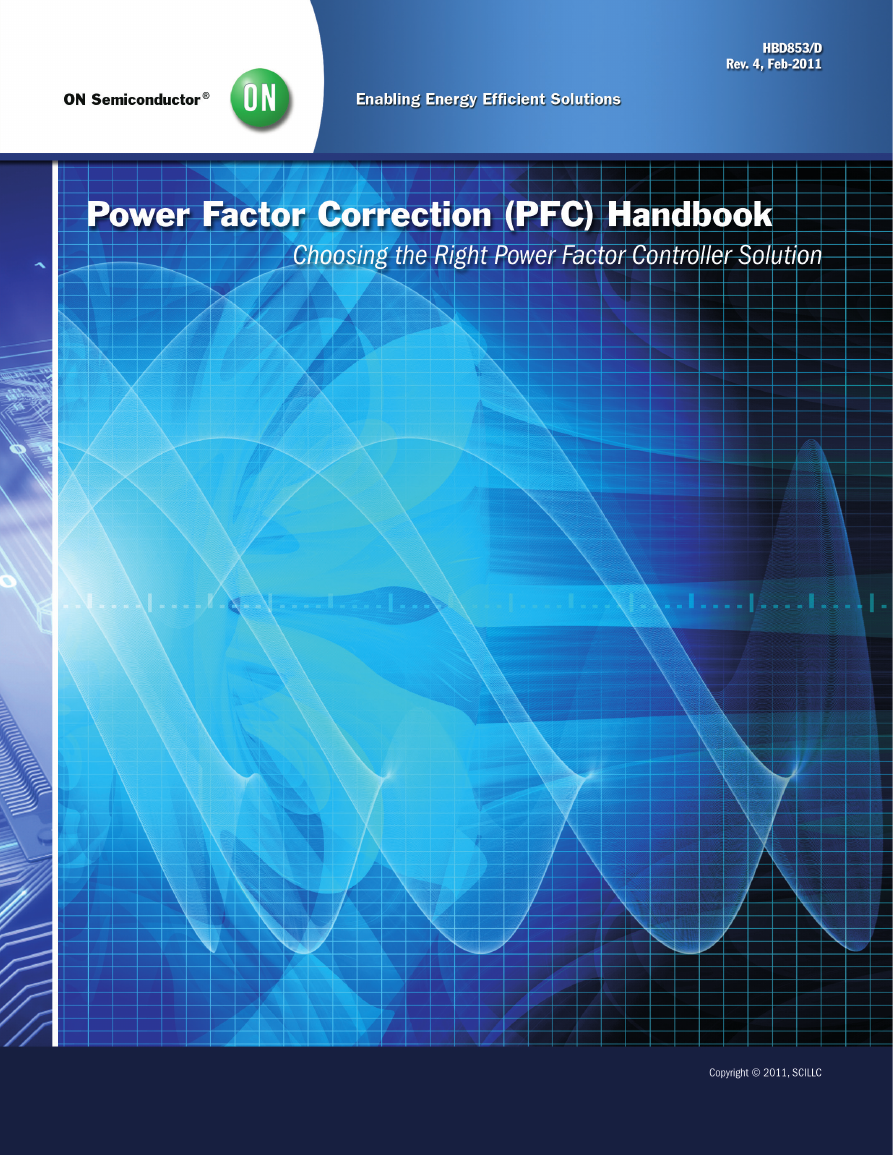
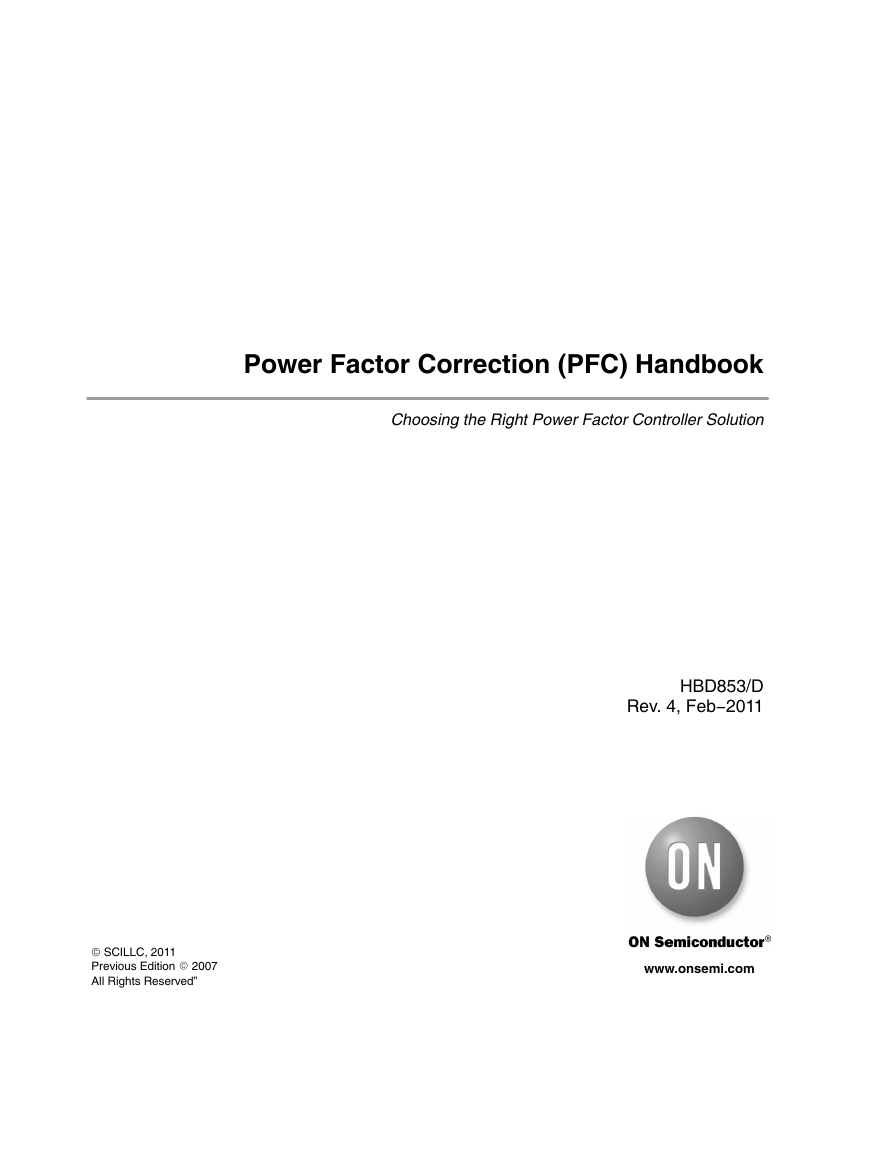
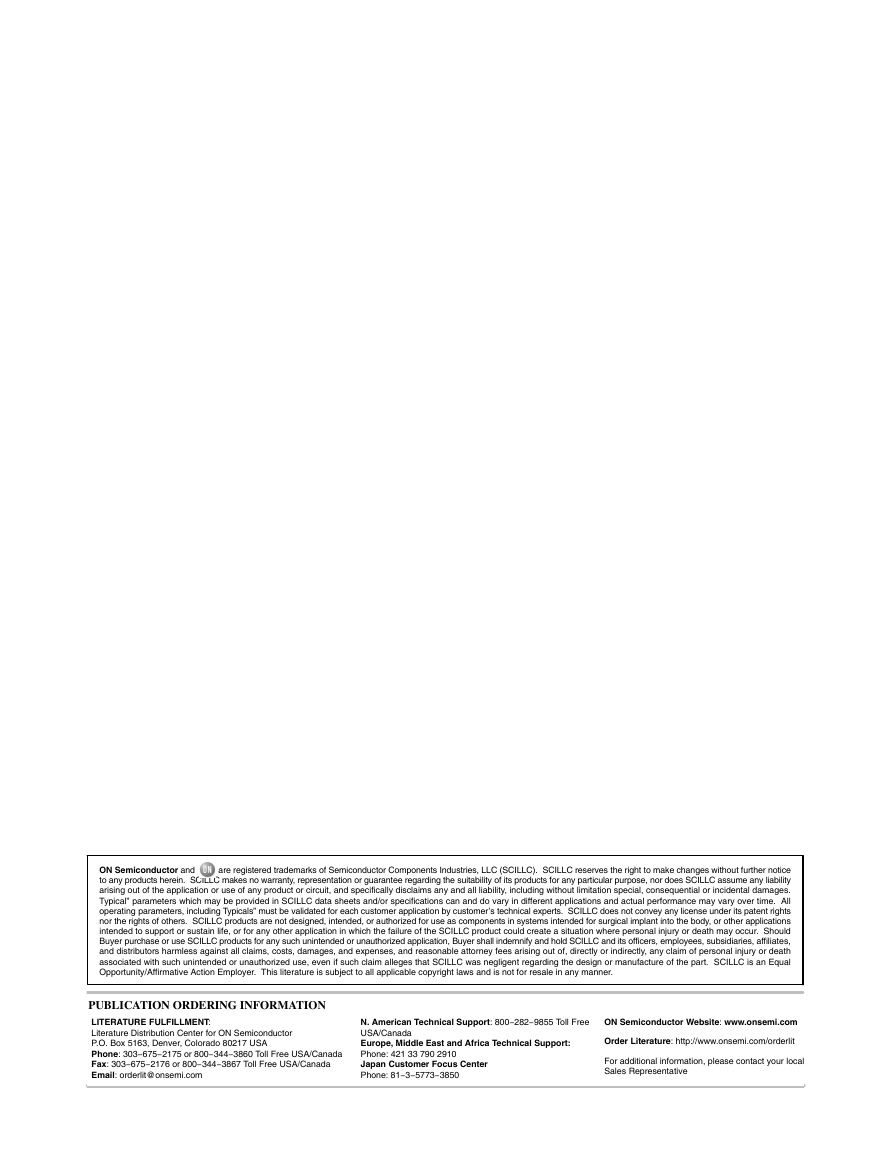
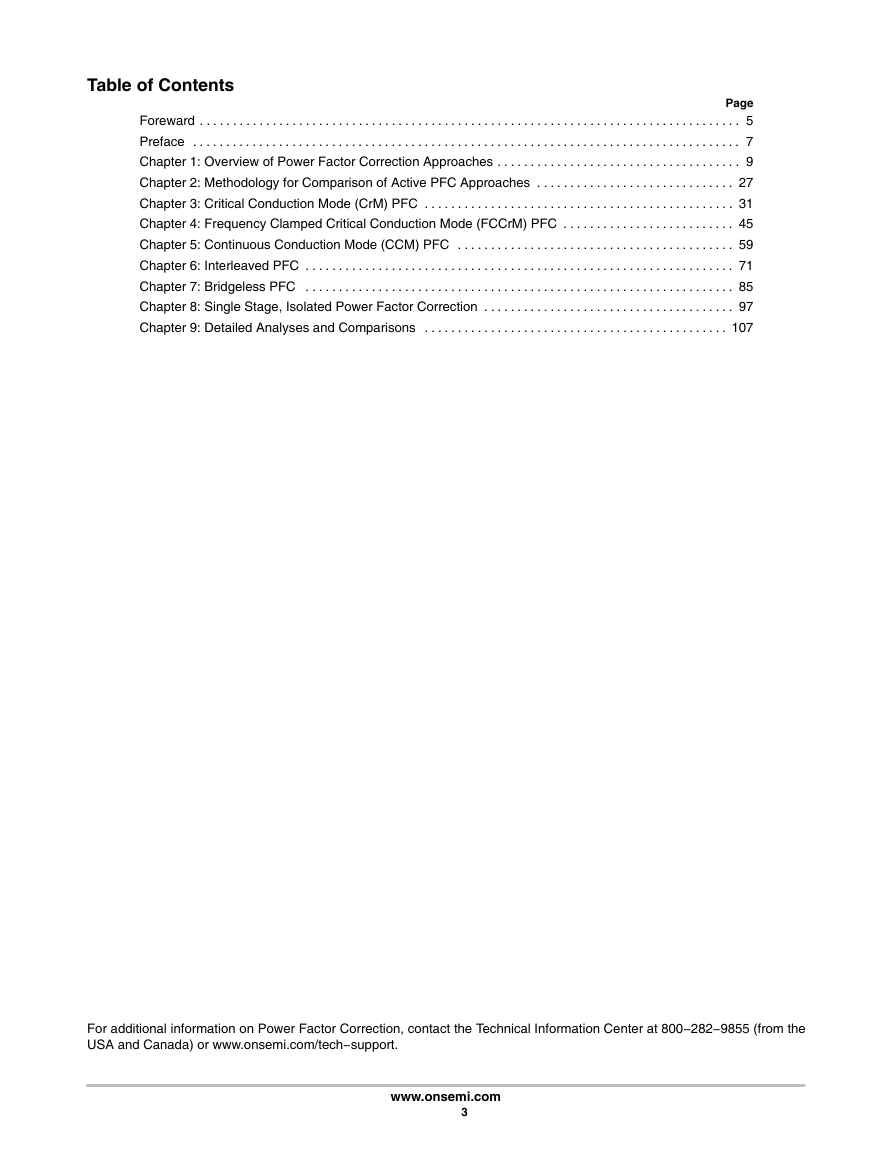

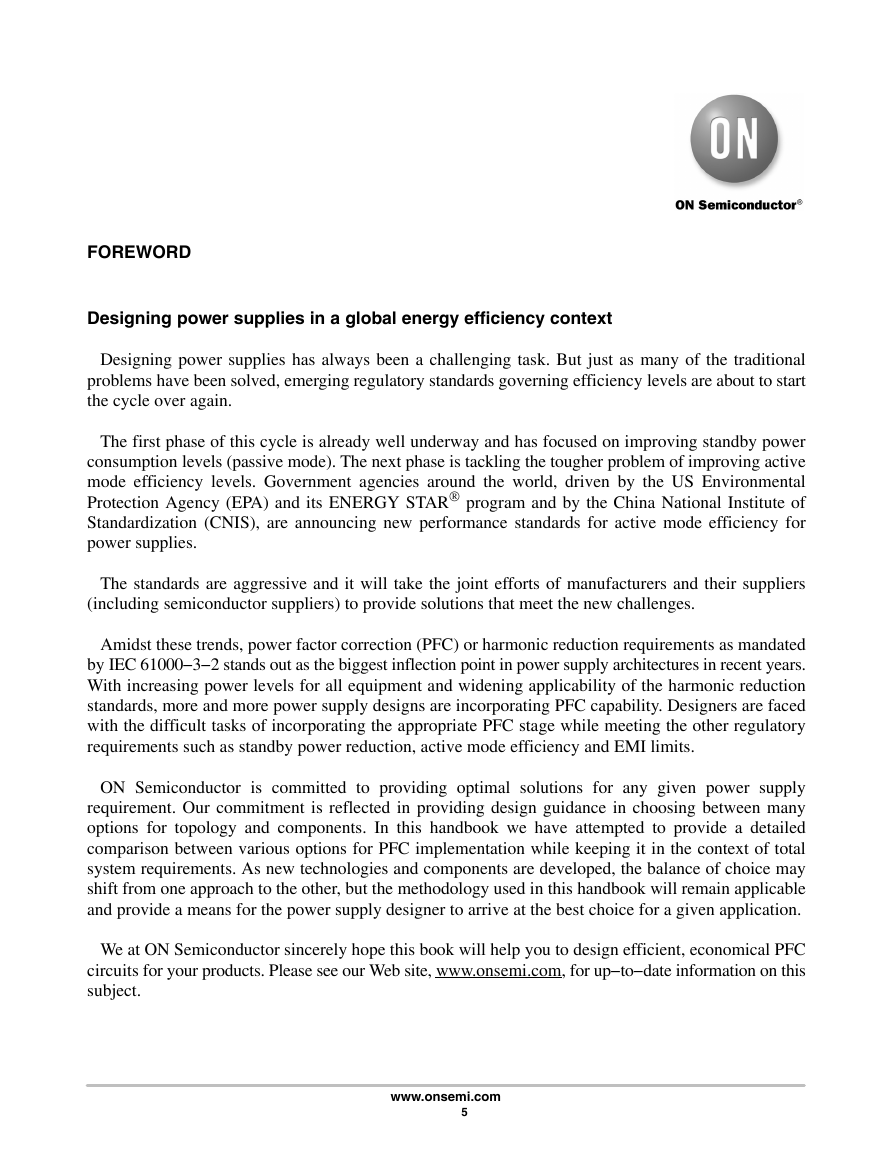

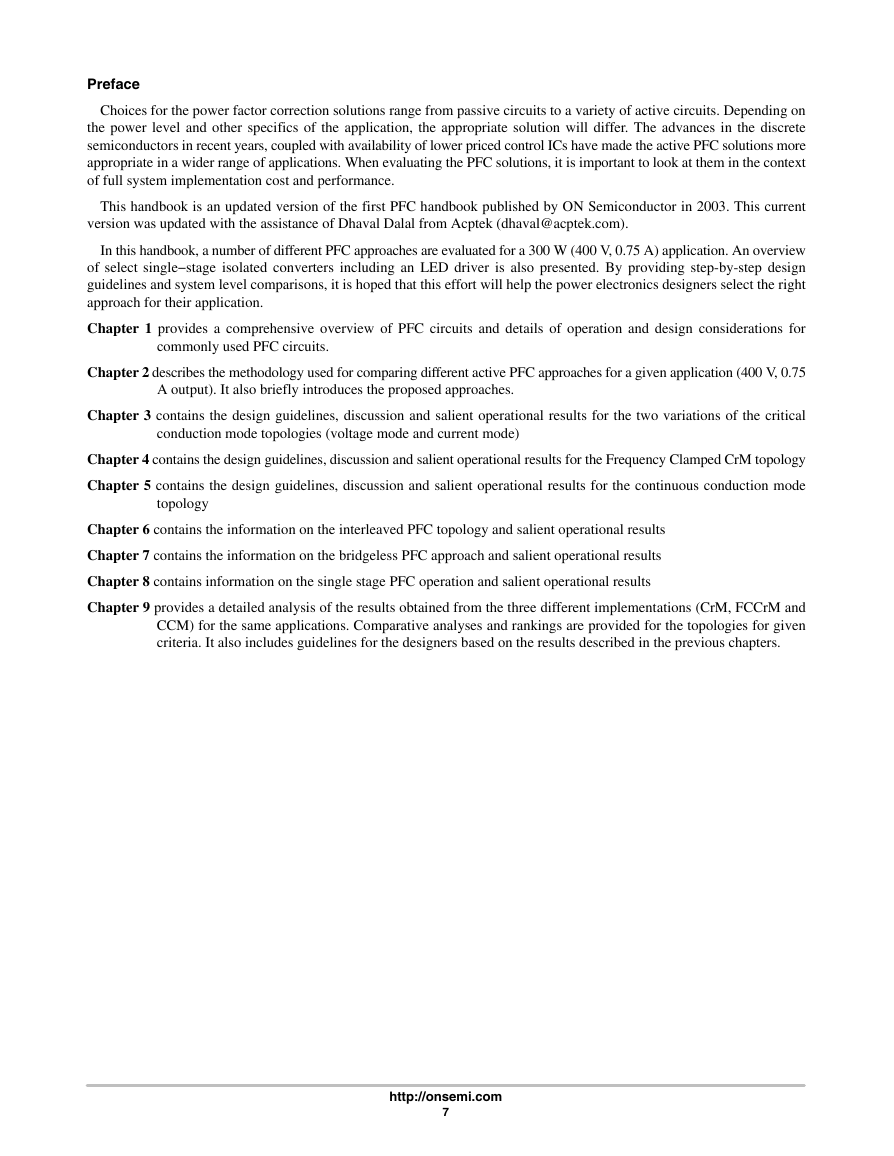








 2023年江西萍乡中考道德与法治真题及答案.doc
2023年江西萍乡中考道德与法治真题及答案.doc 2012年重庆南川中考生物真题及答案.doc
2012年重庆南川中考生物真题及答案.doc 2013年江西师范大学地理学综合及文艺理论基础考研真题.doc
2013年江西师范大学地理学综合及文艺理论基础考研真题.doc 2020年四川甘孜小升初语文真题及答案I卷.doc
2020年四川甘孜小升初语文真题及答案I卷.doc 2020年注册岩土工程师专业基础考试真题及答案.doc
2020年注册岩土工程师专业基础考试真题及答案.doc 2023-2024学年福建省厦门市九年级上学期数学月考试题及答案.doc
2023-2024学年福建省厦门市九年级上学期数学月考试题及答案.doc 2021-2022学年辽宁省沈阳市大东区九年级上学期语文期末试题及答案.doc
2021-2022学年辽宁省沈阳市大东区九年级上学期语文期末试题及答案.doc 2022-2023学年北京东城区初三第一学期物理期末试卷及答案.doc
2022-2023学年北京东城区初三第一学期物理期末试卷及答案.doc 2018上半年江西教师资格初中地理学科知识与教学能力真题及答案.doc
2018上半年江西教师资格初中地理学科知识与教学能力真题及答案.doc 2012年河北国家公务员申论考试真题及答案-省级.doc
2012年河北国家公务员申论考试真题及答案-省级.doc 2020-2021学年江苏省扬州市江都区邵樊片九年级上学期数学第一次质量检测试题及答案.doc
2020-2021学年江苏省扬州市江都区邵樊片九年级上学期数学第一次质量检测试题及答案.doc 2022下半年黑龙江教师资格证中学综合素质真题及答案.doc
2022下半年黑龙江教师资格证中学综合素质真题及答案.doc